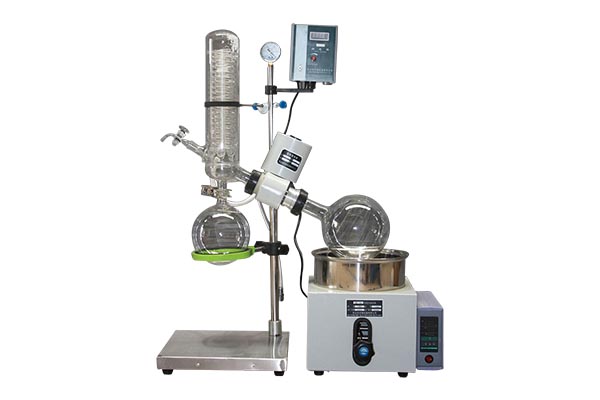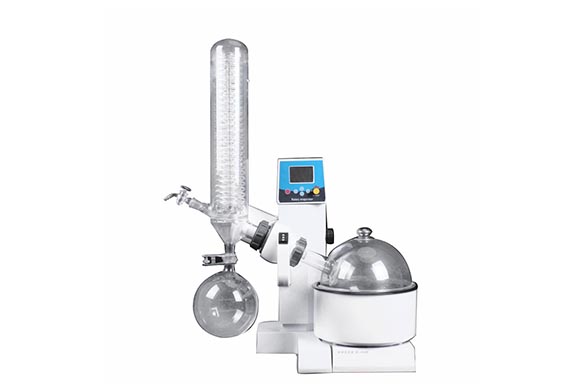What is the purpose of a rotary evaporator?
The purpose of a rotary evaporator is to transform liquid samples into gas. It’s primarily used for concentrating solutions, purifying substances, and recovering solvents in chemical laboratories. It works by evaporating the solvent and leaving behind the solute, thus increasing the concentration of the sample. Additionally, it’s commonly employed for sample preparation, especially for compounds requiring concentration or purification. Overall, a rotary evaporator is a versatile tool facilitating concentration, purification, and solvent recovery in chemistry labs.

RE-301 3L Rotary Evaporator
Vacuum Degree: 0.098Mpa
Rotating Power: 40W
Rotating Speed: 0-120rpm
Heating Power: 2KW
Temperature Accuracy: ±1℃
Up and Down Distance: 120mm
Package Weight (KG):38
Voltage/Frequency (V/Hz): 220V/50Hz
Temperature Control Range of Bath Kettle: 400℃
RE-3000E 3L Rotary Evaporator
Rotary Speed: 0-180rpm
Heating Power: 1.5KW
Lifting Power: 15W
Lifting Stroke: 120mm
Package Weight (KG): 30
Temp. Control Accuracy: ±1℃
Voltage/Frequency (V/Hz): 220V/50Hz
Bath Kettle Temp. Control Range: 0-99℃
Rotary Power: 40W Brushless Electric Machine

Why is a rotary evaporator better?
Efficiency
It speeds up the evaporation process by rotating the sample at the bottom of the flask, making the solvent evaporate more readily, thus improving evaporation rate and efficiency.
Time-saving
Thanks to its efficiency, a rotary evaporator can complete solvent evaporation in a shorter period, saving experimental time.
Control
Rotary evaporators typically come with temperature and vacuum control features, allowing precise control over temperature and pressure during evaporation, facilitating precise sample handling.
Solvent recovery
It efficiently recovers solvents, reducing experimental costs and aiding environmental protection.
Sample protection
Since the evaporation process occurs at lower temperatures and under vacuum conditions, it effectively protects volatile components in the sample, reducing sample loss and alteration.
